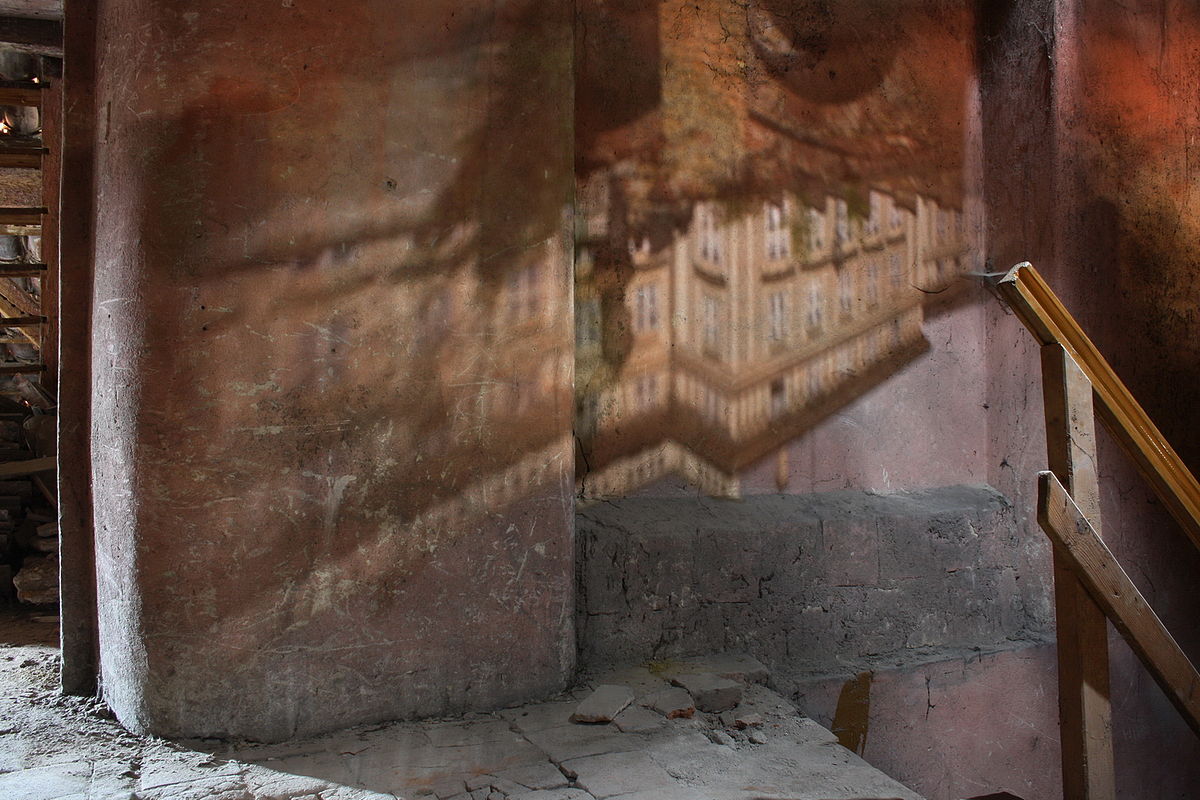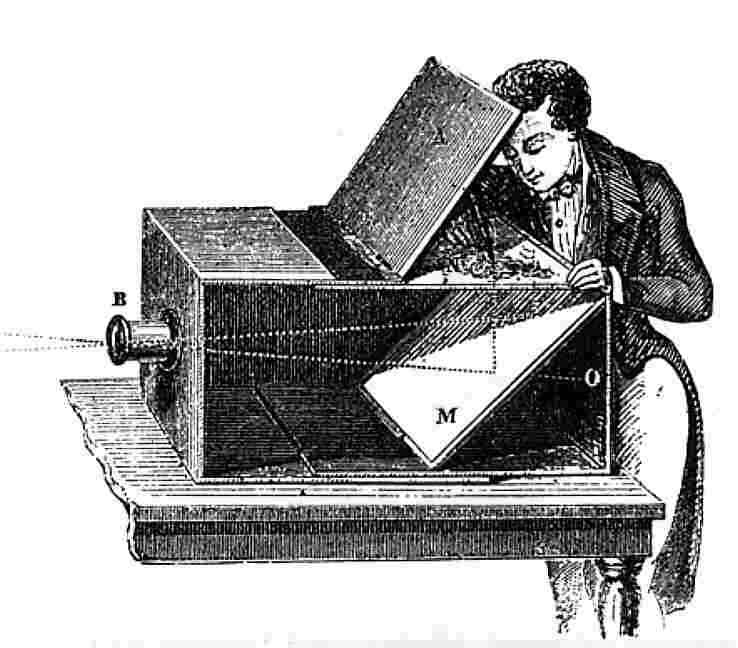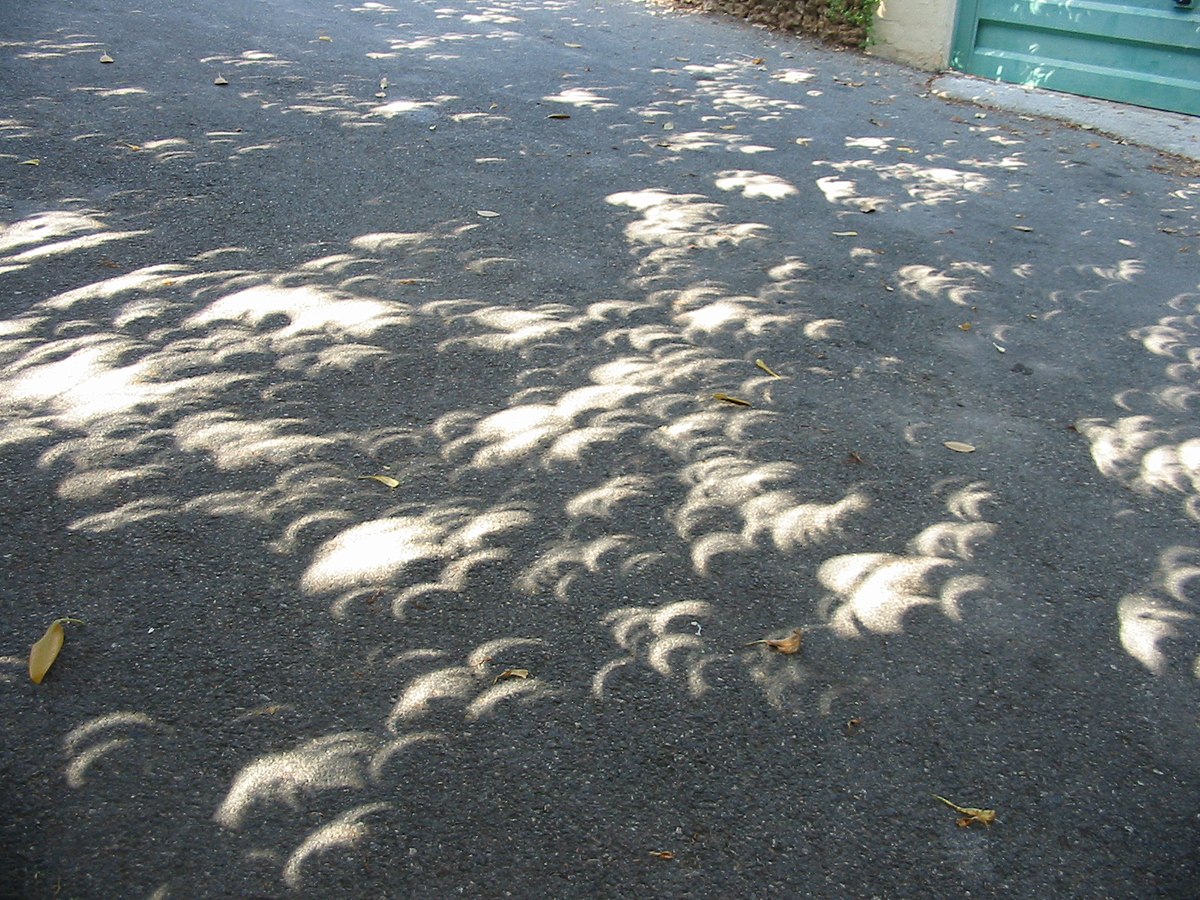A camera obscura (plural camerae obscurae or camera obscuras, from Latin camera obscūra, “dark chamber”)[1] is a darkened room with a small hole or lens at one side through which an image is projected onto a wall or table opposite the hole.
“Camera obscura” can also refer to analogous constructions such as a box or tent in which an exterior image is projected inside. Camera obscuras with a lens in the opening have been used since the second half of the 16th century and became popular as aids for drawing and painting. The concept was developed further into the photographic camera in the first half of the 19th century, when camera obscura boxes were used to expose light-sensitive materials to the projected image.
The camera obscura was used to study eclipses without the risk of damaging the eyes by looking directly into the sun. As a drawing aid, it allowed tracing the projected image to produce a highly accurate representation, and was especially appreciated as an easy way to achieve proper graphical perspective.
Before the term camera obscura was first used in 1604, other terms were used to refer to the devices: cubiculum obscurum, cubiculum tenebricosum, conclave obscurum, and locus obscurus.[2]
A camera obscura without a lens but with a very small hole is sometimes referred to as a pinhole camera, although this more often refers to simple (homemade) lensless cameras where photographic film or photographic paper is used.

By :Link

By : Link
By :Link
- 2Technology
- 3History
- 3.1Prehistory to 500 BCE: Possible inspiration for prehistoric art and possible use in religious ceremonies, gnomons
- 3.2500 BCE to 500 CE: Earliest written observations
- 3.3500 to 1000: Earliest experiments, study of light
- 3.41000 to 1400: Optical and astronomical tool, entertainment
- 3.51450 to 1600: Depiction, lenses, drawing aid, mirrors
- 3.61600 to 1650: Name coined, camera obscura telescopy, portable drawing aid in tents and boxes
- 3.71650 to 1800: Introduction of the magic lantern, popular portable box-type drawing aid, painting aid

